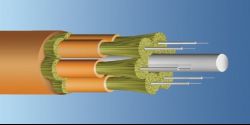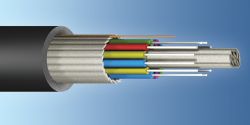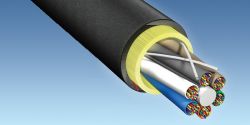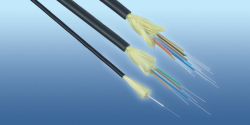Special Optical Cables
Fluorine doping increases the radiation resistance of the optical fiber
The optical fiber, the core of which is made with Fluorine additive, ensures reliable optical data transmission even in high radiation environments (linear accelerators, near nuclear reactors).
Different color centers are formed in the silica-based optical fiber by radiation. Color centers increase light absorption, enhance attenuation. This phenomenon is called “Radiation Induced Aging” (RIA).
Typical single-mode fibers are made with a germanium core and a pure silica shell, while pure Pure Silica Core (PSC) fibers are made with a pure silica core and a fluorine doped shell.
The radiation-resistant single-mode fibers are made with a fluorine-doped core, the optimum concentration of fluorine being 0.8% by weight. The figure shows that the spectral attenuation of ordinary PSC fiber and fiber with 0.8% fluorine doped core at communication at significant wavelengths, 1310 and 1550 nm, is almost the same (l: Laser Focus World, 2009 June http://www.aflglobal.com/productionFiles/resources/White-Papers/90390-623e-LFW.aspx):
Studies by CERN (Geneva) and the Fraunhofer Institute (Munich) have confirmed the following:
- The transmission attenuation of the fluorine-doped fiber at 1310 nm at a radiation dose of 1 MRad / hour (Radiation absorbed dose) did not reach 5 dB / km (the attenuation of the next best fiber in the comparative measurements was 18 dB / km).
- At high doses, the induced loss stabilized, i.e., did not change with dose accumulation. For most fibers, long-term radiation increased RIA, while Fujikura fibers stabilized.
Studies have also shown that at 72 kRad / h, the rate of aging of the best PSC fiber is two to six times that of fluorine fiber. The aging of germanium doped fiber is an order of magnitude higher than that of fluorine fiber.





